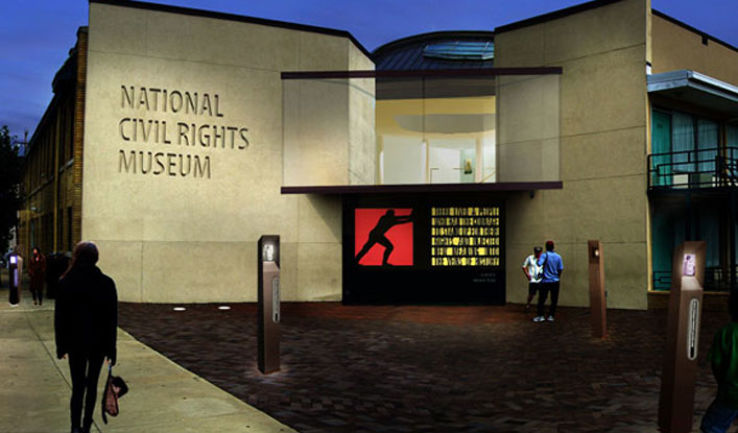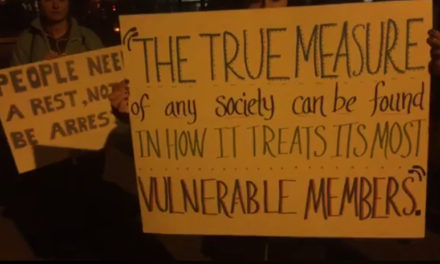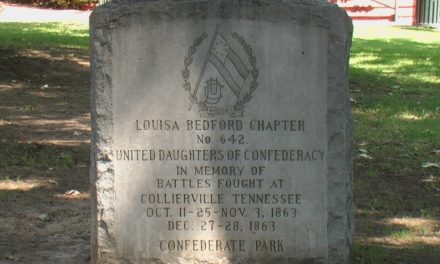There’s a tendency in our community for pessimism to overwhelm signs of progress and for negative thinking to obscure accomplishments that matter.
This comes to mind because this year is the 35th anniversary of the groundbreaking for the National Civil Rights Museum, conceived in tragedy but which became a sacred site of honest reconciliation and inspiration, born in the midst of political controversy and now an international site of freedom, and matured to become a new symbol for a city shaken by the convulsive events that occurred there.
There are many reasons that it’s impossible today to imagine Memphis without the National Civil Rights Museum. There are even more reasons that its lessons and meaning are just as relevant today as they were on that day in 1989 when shovels ceremoniously turned the dirt that would transform the site of the Lorraine Motel.
As time passes, we often forget the promise and excitement from days like those and that too is a lesson of the National Civil Rights Movement. These are moments of progress that define who we are today and what we can become in the future.
And they regularly happen despite formidable odds against them.
Milestones
There are Shelby Farms Parks carved from a former penal farm into a distinctive public space, FedExForum that stole an NBA team from Vancouver, Canada, Crosstown Concourse that transformed an eyesore into a civic hub, International Paper’s world headquarters that we stole from Manhattan, Memphis International Airport clever repurposing of what was the husk of a former hub, MLK50 and Institute for Public Service Reporting providing the context missing from daily newspaper coverage, Overton Park enhanced and reenergized into renewed public space, Shelby Farms and Wolf River Greenways connecting neighborhoods and nature, and many more.
Most recently, there is a reinvented riverfront that rivals and surpasses the ones in cities we have envied for many years. With the likelihood of one million visitors in its first year, a design built on equity, and being called a “World-Changing Idea” by Fast Company and named by Bilbao Metropoli-30’s as one of the 100 best projects in the world, the riverfront should encourage us to aim higher and act boldly. Soon to come are the additions of Memphis Museum of Art to replace the poor use of the bluff for a deteriorating garage and fire station, the new commercial development that comes as a result of transformed, and the Metal Museum occupying the former College of Art in Overton Park.
And that doesn’t even include the promising redevelopments of 100 N. Main Building and the Sterick Building and hopeful futures for The Walk and the Grand Hyatt.
And yet, the excitement about all of these is not about a project but about people, because behind every one of these milestones of progress is a person with vision, whether it was about public places, journalism, economic growth, public facilities, or natural infrastructure.
It’s About People
Memphis has a history of special people like this – people who did not ask for permission, people who were often told how their ideas could never come to fruition, people who persisted and persevered, people whose creativity could not be thwarted.
And while we know all the names of our history, it’s worth remembering that these kinds of people don’t just exist in the rearview mirror. And because of it, Memphis has all the signs of achievement mentioned above and each one has someone associated with it that made it happen.
At the National Civil Rights Museum, these visionaries were Charles (Chuck) Scruggs, A.W. Willis, and D’Army Bailey.
In observance of the 35th anniversary of the museum’s groundbreaking, I’m republishing a September 19, 2018, blog post, National Civil Rights Museum – Beating the Odds:
It was 1986 and the betting on a proposed civil rights museum in Memphis was that it would never be built.
It was caught in the snare of racial politics in Memphis, and if it were not for Ned McWherter, the son of a share cropper who rose to become the always savvy and powerful Speaker of the Tennessee House of Representatives, it might never have happened.
With an eye on the governor’s office and an appreciation for the impact that the African-American vote in Shelby County could have on that race, Mr. McWherter came out in support of a civil rights museum at the Lorraine Motel and essentially dropped the political hot potato into the laps of Memphis Mayor Dick Hackett and Shelby County Mayor Bill Morris, who did not have the votes on their respective legislative bodies to approve the funding.
That the idea of a civil rights museum was being considered at all was testament to a small group of African-American leaders who saw it as a way to turn the site of a national tragedy into a vehicle for reconciliation in Memphis. They bought the hotel where Dr. Martin Luther King Jr. was killed following its foreclosure in 1982 and its sale on the Courthouse steps. But, they had received mostly polite attention to their pitches for state, county, and city funding.
Funding Approval
Proving that timing is everything, Mr. McWherter’s race for governor changed everything. He promised $4.4 million in state funding, but contingent on an equal amount from Memphis and Shelby County. Strong opposition to local funding was immediate and stalled as city and county government leaders fought over which government should act first on the funding request. City government said that its funding was contingent on county government funding the project.
In the face of stern pressure from opponents and supporters, Mayor Morris broke the logjam with some clever political gamesmanship. He announced that he would submit a funding request for $2.2 million to the Shelby County Board of Commissioners but the money would never be released unless the project could meet roughly a dozen rigorous conditions.
Opponents were satisfied because they presumed the museum’s sponsors could never meet the conditions, which included a Smithsonian Institution-designed facility, no local government money for operations, and ownership by state government. While the conditions sounded stringent, what Mayor Morris knew was that they had already been accomplished.
In short order, funding by city and county government was approved, and in 1987, the groundbreaking was held not too long after Mr. McWherter was sworn in as governor.
Divine Intervention
Designed by former exhibitions director at the Smithsonian Institution’s National Museum of American History Ben Lawless, the National Civil Rights Museum opened September 28, 1991, but its construction was not without struggles. The site was firebombed and there were controversies about bids, selling bricks from the hotel to raise money, and whether a laser beam tracking the trajectory of the bullet that killed Dr. King was in poor taste (it was eliminated).
Through it all, civil rights lawyer A.W. Willis Jr., museum advocate and first African-American in the Tennessee Legislature since Reconstruction, greeted every obstacle with the comment that the project was divinely inspired: “Don’t worry about it. Someone bigger than us is in charge of this project.”
The early years of the museum were marked by tumultuous board meetings punctuated by name-calling. At one point, state officials were concerned enough about the acrimony and the inability of the board to make decisions that they considered taking over the museum.
In time, the tenor of the meetings improved and the museum found its footing and its voice in the community. It had a $11 million expansion of the museum in 2002 as the museum stretched to Main Street and a $27 million rebirth of the museum being unveiled in 2014 to glowing reviews, including Associated Press calling it “the best and most recent scholarship on civil rights today.” (The museum is presently in the midst of another major multi-million dollar expansion.)
Competitive Advantage
In a marketplace that now includes more than two dozen African-American and civil rights museums built since 1989, some costing more than $100 million, the National Civil Rights Museum is noteworthy for its steady evolution and management while some have foundered and Virginia’s proposed U.S. National Slavery Museum raised money for years but was finally abandoned.
Today, the National Civil Rights Museum is among the five percent of museums accredited by the American Alliance of Museums, it is one of only six U.S. Sites of Conscience, and it has even been an answer on Jeopardy. Through controversy, opposition, conflict, and competition, the National Civil Rights Museum prevails and prepares to celebrate the 35th anniversary of its opening on September 28 in two years, and with its latest renovation and upgrades, it continues to leverage the intimacy and historic significance – there is nothing in any museum anywhere as moving and emotional as standing outside and looking into Dr. King’s hotel room as Mahalia Jackson sings Precious Lord, Take My Hand – that have always been its competitive advantages.
McWherter died in 2011 on April 4. It was the 43rd anniversary of the killing of Dr. King.
**
Join me at the Smart City Memphis Facebook page and on Instagram where these blog posts are published along with occasional articles, reports, and commentaries that are relevant to Memphis.






The laser would have been pretty weird. It’s an intense experience to stand in the spot where the shooter was and look across to the balcony and see people there, though.